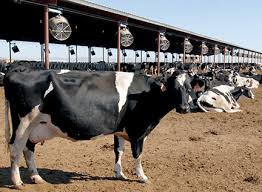Public-private partnerships propel milk production
Public-private partnerships have seen Zimbabwe’s milk production increasing by 5,9 percent in the first seven months of 2023, official data shows.
The latest data from the Ministry of Lands, Agriculture, Fisheries¸ Water and Rural Development’s dairy services department shows that milk output stood at 54 million litres during the period under review, from 51,2 million litres in the comparable period.
Milk intake by processors was up 8 percent in the first four months of 2023 to 49,7 million litres from 46 million litres.
Retail milk production, however, declined by 11,76 percent from 5,1 million litres in the same period last year to 4,5 million litres.
For the period under review, an average of 7,71 million litres of milk were produced. The average amount of milk produced in the country during the same time period last year was 7,39 million litres, the data shows.
Imports of milk powder declined from 8,9 million kg to 7,4 million kg over the same period.
If the current milk production growth rate is maintained, Zimbabwe could surpass the national milk target of 150 million litres by 2025, some industry players say. That will leave the country with an excess of 20 million litres given that its annual requirement currently stands at 130 million litres.
The country was once a net exporter of milk, producing over 260 million litres per year at its peak in the early 90s.
Zimbabwe Association of Dairy Farmers (ZADF) chairperson, Mr Ernest Muzorewa forecast Zimbabwe’s milk production to increase to 108 million litres this year from 91 million litres in 2022.
The dairy processors source milk from dairy farmers and import milk powders that will be reconstituted to produce fresh milk due to an inadequate supply of raw milk.
Permanent secretary in the Ministry of Lands, Agriculture, Fisheries¸ Water and Rural Development Dr John Basera said the growth in milk production was partly due to synergies between the Government and the private sector.
Said Dr Basera: “The interventions are part of the country’s Livestock Recovery and Growth Plan, with a deliberate effort to increase the national dairy herd from 19 000 in 2021 to 29 000 in 2022.”
This included the government’s private sector-funded dairy heifer programme.”
Mr Muzorehwa however, noted that there were several challenges affecting the growth, viability and competitiveness of the dairy sector including low productivity, limited number of dairy animals and weak genetics in the dairy herd. Other challenges besting the sector are high production and processing costs, limited access to affordable finance and foreign currency, high compliance costs and the effects of climate change.
“Until the recent increase, smallholder dairy farmers produced about three percent of the country’s milk production. Markets for milk are strong but production systems are generally inefficient, with growth coming from increases in the number of cows rather than in milk production per animal,” Mr Muzorewa said.
To bridge this gap, dairy farmers needed to modernise by adopting the latest technologies and applying management systems that would help increase volumes and quality.-herald










